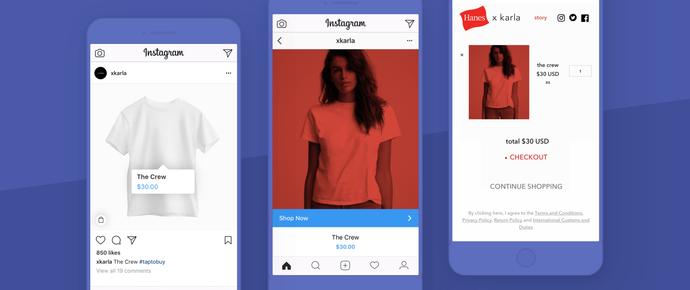The team at
media update unveils three social media platforms that are improving the way in which consumers shop online.
More and more social media platforms are utilising online retail as an opportunity to monetise their platforms, changing what social media was originally designed for at the beginning – a messaging platform for friends and family.
However, the change is beneficial for many consumers who prefer to shop on Amazon instead of at the mall. And with individuals spending a majority of their time online anyway, why not kill two birds with one stone?
Here are three social media platforms that have changed the way consumers shop online – for the better:
1. Pinterest
For those who are unfamiliar with the platform, Pinterest is a web and mobile application solely designed to help its users discover new ideas and ‘pin’ them to their own personal profile.
The platform has recently added a new feature that makes it easier for users to find inspiration from the platform.
How, you ask? With the Lens feature.
The feature is really simple to use. Here’s how:
- Open the Pinterest app and tap on the camera icon.
- Point the camera at a particular object and focus the lens.
- Tap the button to snap a picture, and Pinterest will instantly find related ideas.
Pinterest Lens makes browsing easy for consumers who want to find inspiration. Imagine no longer having to ask people where they bought their clothes from or spending hours on Google trying to search for the brand that sells them.
Pinterest users can simply use the platform’s Lens feature as a browsing tool to find what they’re looking for.
This is an especially smart feature for finding items you wouldn't know how to search for in words. For example, if you saw someone wearing a particular type of dress, but you weren’t sure what it was called – Lens could solve that problem.
2. Snapchat
Snapchat is a platform that is used for sharing short videos or photos, but with a catch. The things you post will only last for a set amount of time of your choosing – between one second and 24 hours.
However, Snapchat is looking to add a new ‘Camera Search’ function.
 Image sourced from TechCrunch
Image sourced from TechCrunch
The feature lets users find products on Amazon by scanning barcodes or taking pictures of objects directly from the ‘Snap cam’.
Wait, what? Yes – you read that right. The ability to visually search for products would give Snapchat’s camera a more general purpose, differentiating it from its biggest competitor – Instagram.
The Camera Search function could become a direct competitor for Pinterest’s Lens, allowing users to find out where (on Amazon) to buy products they snapped pictures of.
It seems Snapchat could be beginning to focus on purchases, rather than just faces.
3. Instagram
Facebook-owned, photo-sharing app Instagram could soon be launching a standalone app built specifically for online shopping.
According to The Verge: “The app, which may be called IG Shopping, would let users browse collections of goods from merchants that they follow, and purchase them directly within the app.”
Due to the app’s popularity, numerous brands have spent time and money putting together beautiful content aimed at luring viewers in as they swipe through. However, if a user sees something they like from a brand, there is currently no way for them to directly view or purchase the item.
 Image sourced from Social Media Today
Image sourced from Social Media Today
The platform has long been moving towards e-commerce, as they have gradually been rolling out ‘Shopping Tags’ for various brands.
These shopping tags allow eligible businesses to add a price and description to specific items on their Instagram page, which, when clicked on, would take users through to a website to purchase the items.
However, Instagram has been slow to roll out these tags, hoping to perfect the system and avoid upsetting – and losing – its valuable user base.
Conducting a social media audit is the next step after you’ve implemented your social media strategy. Find out how it’s done in our article, How to do a social media audit in seven surprisingly simple steps.